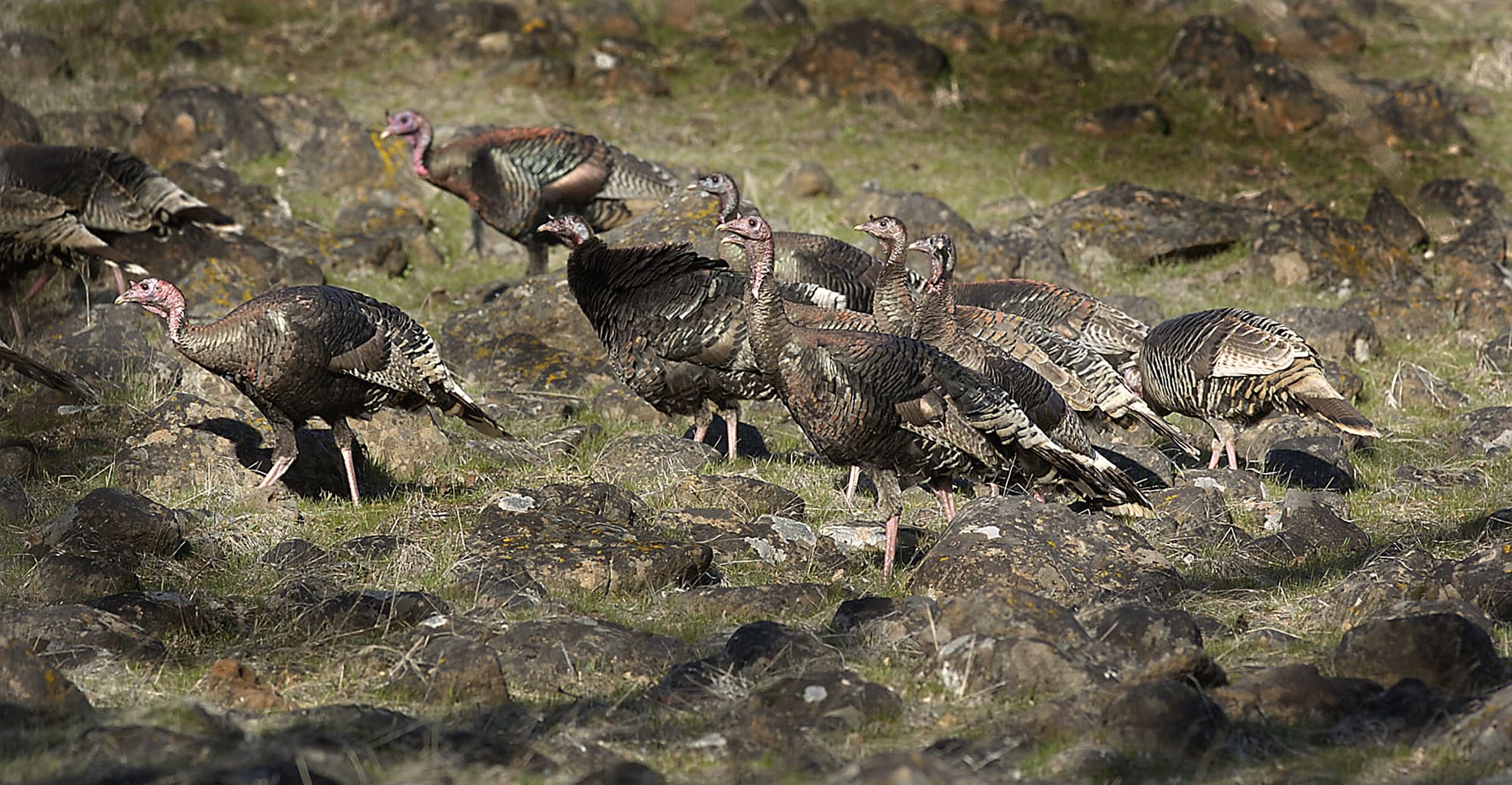Bagging a gobbler in the spring turkey seasons that open Saturday in Washington is a mini version of bowhunting for elk.
A turkey hunter who scouts out a place to hunt and acquires the know-how has a high likelihood of calling in a hormone-charged “bull” that can be carried back to the pickup – or Prius – in one easy load.
Much of what goes into being a safe and successful turkey hunter was covered for 21 students in a free class this week in Spokane sponsored by the Washington Department of Fish and Wildlife.
Asked to summarize some of the main points of the class, instructor Rich Mann rose to the challenge even though he says he can’t fully cover the topic of turkey hunting in a three-hour class.
Since his retirement as a Washington Fish and Wildlife police officer, he’s been working as a field rep for the National Wild Turkey Federation. He’s also been a turkey hunter for 35 years. From that experience, the spotlighted these points.
Know the bird: Washington has three wild turkey subspecies, each with a different habitat preference. A hunter should know turkey habits and be able to identify a legal “bearded” turkey. Look for tracks and other indicators, such as wing drag marks, that indicate a strutting tom is present. An elongated and “J” shaped dropping suggest a gobbler while a “dollop” is usually a hen. Tracks longer than 2 1/2 inches likely are toms; shorter tracks are probably hens or jakes.
Scout: Get out before sunrise and late in the afternoon to drive, walk, look for sign and listen. Talk to landowners and other people who might have a bead on where turkeys have been hanging out. School bus drivers in rural areas can be good sources, for example. Find out whether land is public or private and get permission as necessary.
Be equipped: A license and turkey tag, full-choked shotgun, shot shells, calls and camouflage clothing are the basics to be assembled. Decoys and blinds are used by some hunters. A camo day pack with sitting pad, snacks and water, survival kit, knife and other gear should be considered.
Practice: Pattern your shotgun for loads with tight groups. Learn to make basic yelp, cluck and purr sounds starting with slate or box calls. In the field, avoid calling too much, which can turn off gobblers.
Be safe: Be as passionate about safety as you are about bagging a tom.
For example:
*Avoid wearing or carrying anything that’s red, white or blue – the colors found in the head (aiming spot) of a spring tom.
*Be sure of your target: Never shoot at movement or color. Make sure you can see the entire bird before shooting.
*Keep a hunter-orange vest and cap in your day pack to be donned after shooting a turkey for an added measure of safety when carrying a turkey out through the woods.
*Set up with forward openings for at least 30 yards and with a bulletproof backstop at your back, such as a large tree, for protection from a hunter who might be moving in from behind. If you see somebody coming toward your setup, don’t wave or move; that might trigger an excited and undisciplined hunter to shoot your way. Call out to identify yourself as person.
*Say no to decoys made for hunters to hide behind while sitting or sneaking, Mann said. “The last thing I would do is be behind a fanned out turkey tail in the field. The literature says they’re effective, but so so are grenades.”
Be ethical: Go beyond the basic laws to be a good sportsman by not moving in on someone else’s bird. Shoot at toms that are within range, generally inside 35 yards, for a tight-pattern kill shot to the head and neck. Never abuse public or private property.
Licensing requirements
In Washington, wild turkey hunters must carry a valid small-game hunting license ($40.50 for residents) and a turkey tag ($15.90).



